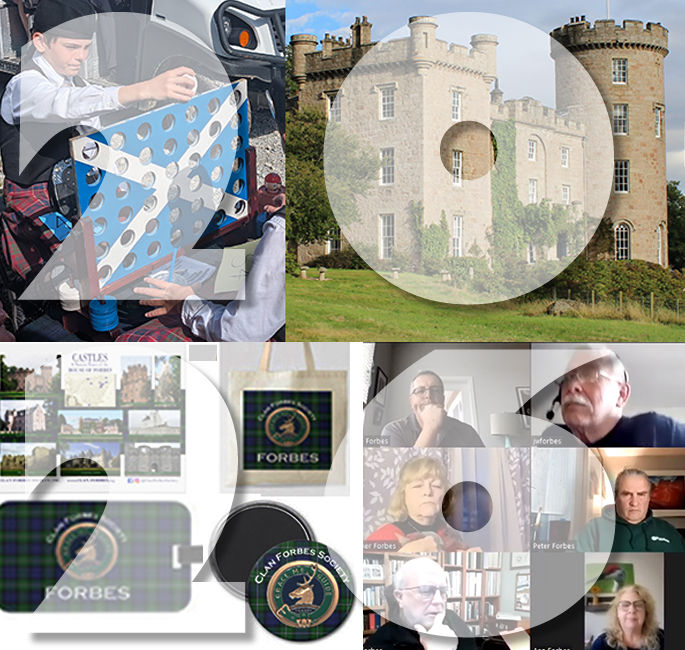Myth of Harry Gordon of Knock
- Bart Forbes

- Dec 28, 2023
- 3 min read
Updated: Jan 3, 2024
Against the backdrop of the struggle between supporters of the deposed Catholic Mary, Queen of Scots, and of her young son, James VI, the former allies Forbeses and Gordons become foes. This was precipitated on September 4, 1571, when George Gordon, 5th Earl of Huntly, commanded a raid on Stirling Castle that resulted in the murder of the King’s Regent, Matthew Stewart, 4th Earl of Lennox.
William, 7th Lord Forbes, was shocked by this raid and murder. On October 10, 1571, Forbeses gathered “to enterprise something against the Gordons and the rest of the the Queen’s favourers in these parts.” (Gillies, John. 1780. The History of the Feuds and Conflicts among the Clans in the Northern Parts of Scotland. Glasgow: J. & J. Robertson.) This lead to a series of confrontations in 1571 at Tilliangus, Craibstane, Druminnor Castle, and Corgarff Castle. This resulted in a series of of attempts for retribution between the two families -- both factual and fanciful.

One of the more enduring myths involved Henry (Harry) Gordon of Knock and “Alexander Forbes of Strathgirnoc.” The story goes that Harry’s seven sons went out one day to cut peat and “unwittingly” set to work on Strathgirnoc’s land. Forbes caught them with his servants and struck off their heads which were then stuck onto the top of their “flauchter-spades” (peat cutters.) When a servant told Gordon of the fate of his sons, “he fell over the bannisters, and was killed.”
This tale first found form in 1869 (Taylor, Elizabeth. 1869. The Braemar Highlands: Their Tales, Traditions, and History. Edinburgh: William P. Nimmo.) and was retold in 1876 (Grant, John. 1876. Legends of the Braes o’ Mar. Aberdeen: A. King & Company.) The legend is repeated in a later work but then contradicted with references from earlier historians: “Sir Robert Gordon (Earldom of Sutherland) and Macfarlane (Genealogical Collections) say he was killed on November, 1592, by a raiding party of the Mackintoshes.” (Bulloch, John Macolm. 1907. The House of Gordon. Aberdeen: New Spalding Club.)

The death of Henry “Harry” Gordon of Knock is described in detail in a more accurate historical genealogy. The son of George Gordon, 5th Earl of Huntly, was George Gordon, 1st Marquess of Huntly. Continuing his father's murderous ways, he killed James Stuart, 2nd Earl of Moray (or Murray), on February 7, 1592. This caused the “Clan-Chattan, or Tribe of Mackintosh, Tribe of the Grants, with several others of the Vassals of the Earl of Murray, who dwelt near Huntly's Lands, combine together to kill Huntly, or at least destroy his Lands and Tenants. Angus Mac William, one of the Clan Chattan, breaks into Mar, towards the Head of Dee, spoils the Countries of Strath-Dee and Glenmuick belonging to Huntly, and killed four of the Sirname of Gordon, Henry Gordon of Knock, Alexander Gordon of Toldow, Thomas Gordon of Blaircharosh… and… Alexander Gordon of Brachly.” (Gordon, William. 1727. The History of the Ancient, Noble, and Illustrious Family of Gordon. Edinburgh: Thomas Ruddiman.)
As for “Alexander Forbes of Strathgirnoc,” no other reputable history mentions his existence. Strathgirnoc was clearly a Forbes estate. This was acquired in the lifetime of William, 3rd Lord Forbes, who succeeded his title in 1461 and died in 1483: “He mightily improved his private fortune by new acquisitiones, particularly the lands of Strathgirnoch on Deeside, which some will have to be the donation of ye Earle of Huntly his father-in-law for his honourable service at Brechin, others that these lands were purchased by Mr. Richard Forbes (a natural brother of his) who was a churchman and Dean of Aberdeen, who disposed the same to his brother Lord William.” (Tayler, Alistair and Henrietta. 1937. House of Forbes. Edinburgh: Third Spalding Club.) However, no evidence exist that this land was ever granted to a cadet family as a “Forbes of Strathgirnoc.” In 1592, the year noted for this legend, the owner was William, 7th Lord Forbes (1513 - 1594.) He had two sons names Alexander, both of whom died young and therefore were not granted the land of Strathgirnoc. (Ibid.)
Interestingly, the creator of the tale, Ms. Taylor, admits in her introduction that “I wish to state that all pretence, even, to research or critical investigation, as to what is truth or otherwise in the traditions, is entirely disclaimed.” (Taylor, Elizabeth. 1869. The Braemar Highlands: Their Tales, Traditions, and History. Edinburgh: William P. Nimmo.)
And yet the myth of Harry Gordon of Knock lives on!




Comments